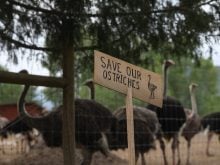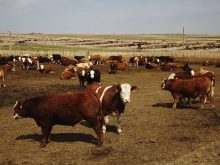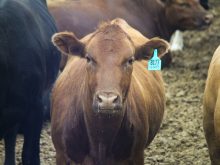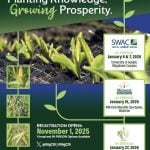Researchers studying feedlot steers and respiratory disease are exploring how to select disease resistant animals, which would save the cattle industry millions of dollars in treatment costs and death losses.
“Evidence shows we can actually make progress in selecting animals that have a reduced susceptibility to bovine respiratory disease, providing we have the appropriate tools,” Colorado State University researcher Mark Enns said earlier this month during the Beef Improvement Federation’s annual meeting in Calgary.
He said the goal is to use genetic technology and DNA markers to reduce the incidence of disease by finding animals that are resistant or can tolerate disease better than others.
Read Also

Lending policy still focused on primary producers: Farm Credit Canada
Farm Credit Canada said it has not changed its business practices and remains committed to supporting all producers, after a report from an Ottawa-based media outlet claimed otherwise.
Other goals include selecting animals that are better able to handle stress from inclement weather or transportation, he added.
“Animals that are under greater stress or have greater potential to come down with this disease complex have more opportunity to express those genetic differences they have.”
Bovine respiratory diseases (BRD) cost U.S. producers $692 million a year in treatment, poor growth and death losses. Past studies have found that the incidence of these diseases may vary from five to 44 percent in feedlot cattle.
Enns said the next step is to decide if selecting for resistance against BRD is practical and economically important, considering resistance may be 18 percent heritable. He believes it is useful, and other researchers have stated that selecting for this trait would not likely impair other desirable qualities such as growth and carcass quality.
Starting last fall, 1,550 feedlot steers from a ranch in Nebraska were vaccinated twice and placed in a Colorado custom lot with 80,000 head. They did not receive a booster upon arrival.
The research team counted death losses and recorded how many cattle had to be pulled from their pens for treatment. Necropsies were done on all dead animals and results were analyzed. Animals that made it to slaughter were also checked for signs of illness, such as lung lesions. Disease peaked about 40 days after arrival, which is typical in many feedlots.
Forty-five percent of the cattle had to be treated for respiratory problems, of which 22 percent had to be treated a second time and 14 percent died.
“This is great if you are looking for genetic variability, but not very good if you own the cattle,” Enns said.
The study will be repeated this year to assess how many cattle became sick, how sick they became and other reasons for health problems, such as the environment. Blood samples were collected and DNA will be correlated to sire groups and analyzed for resistance.















